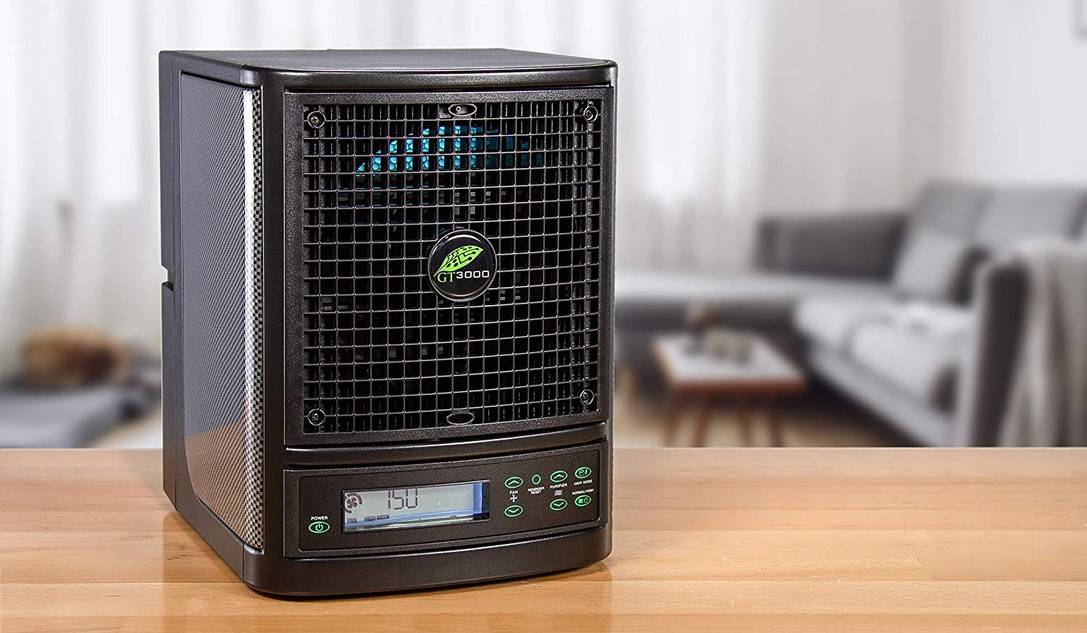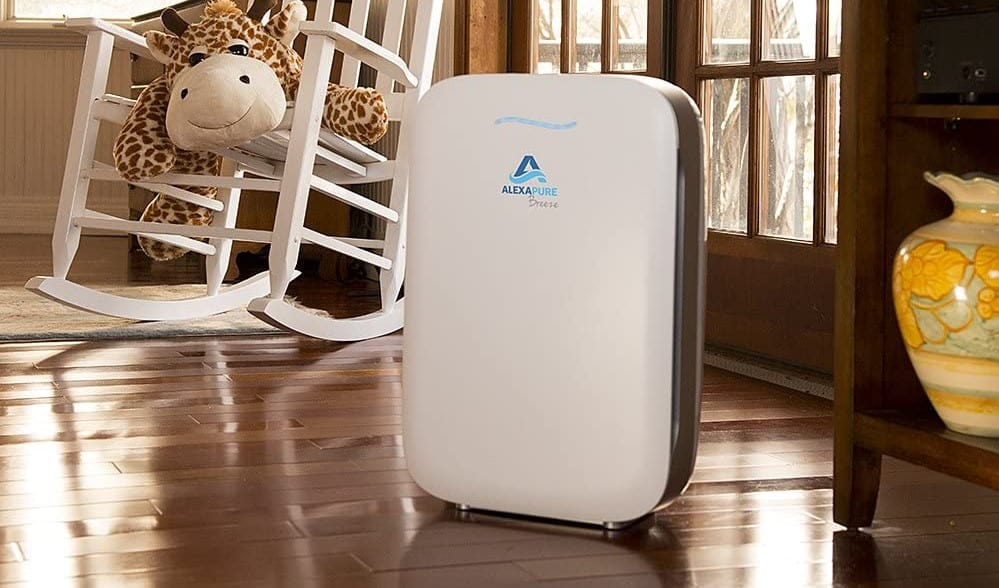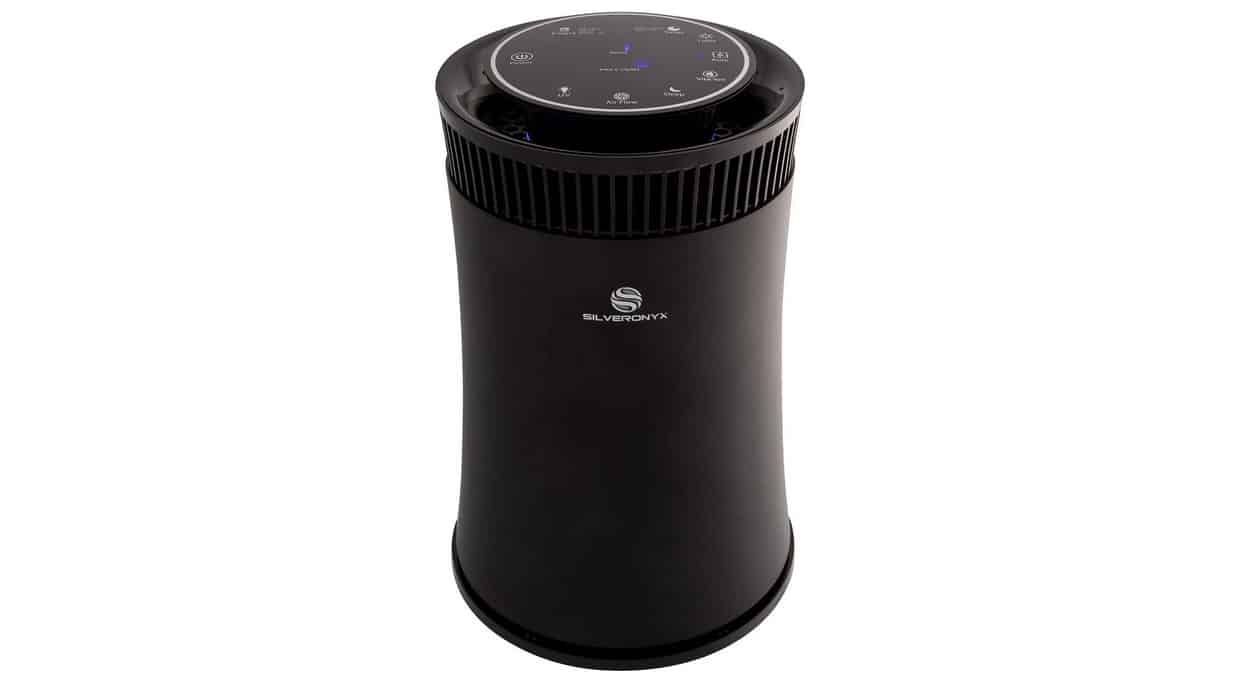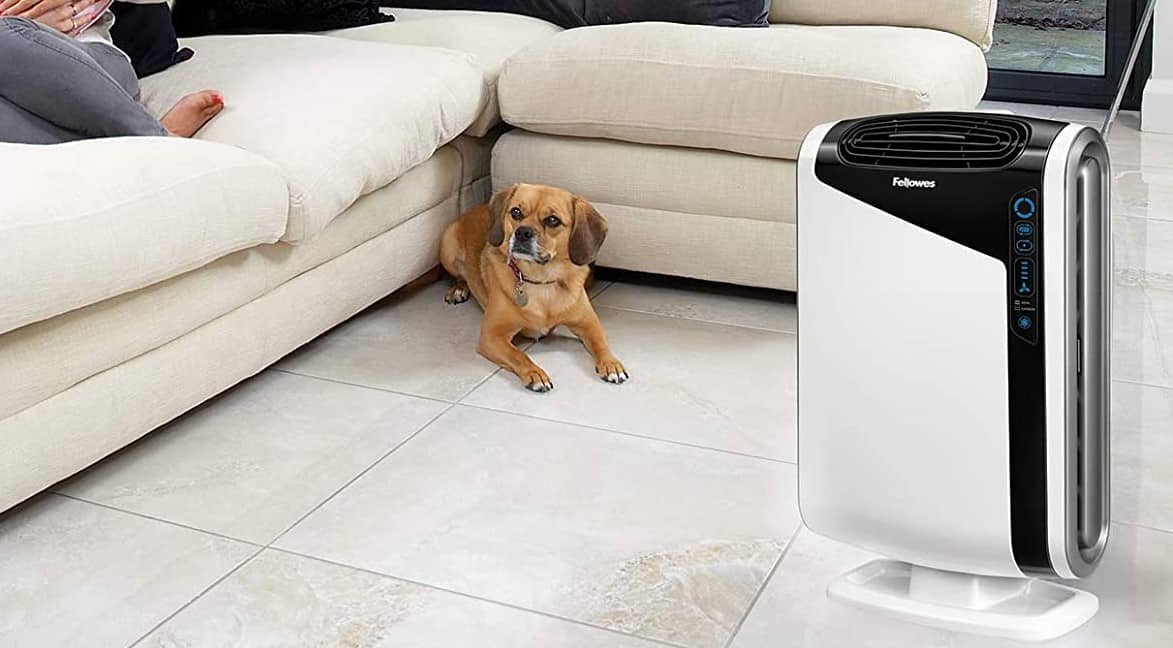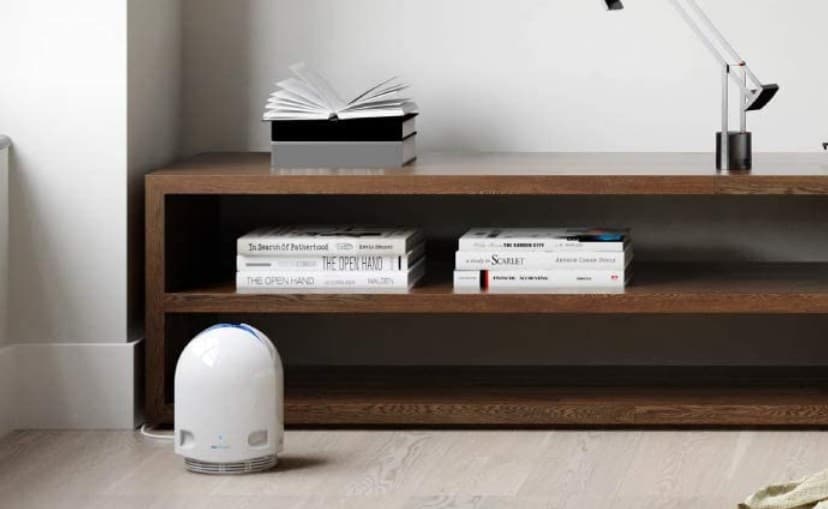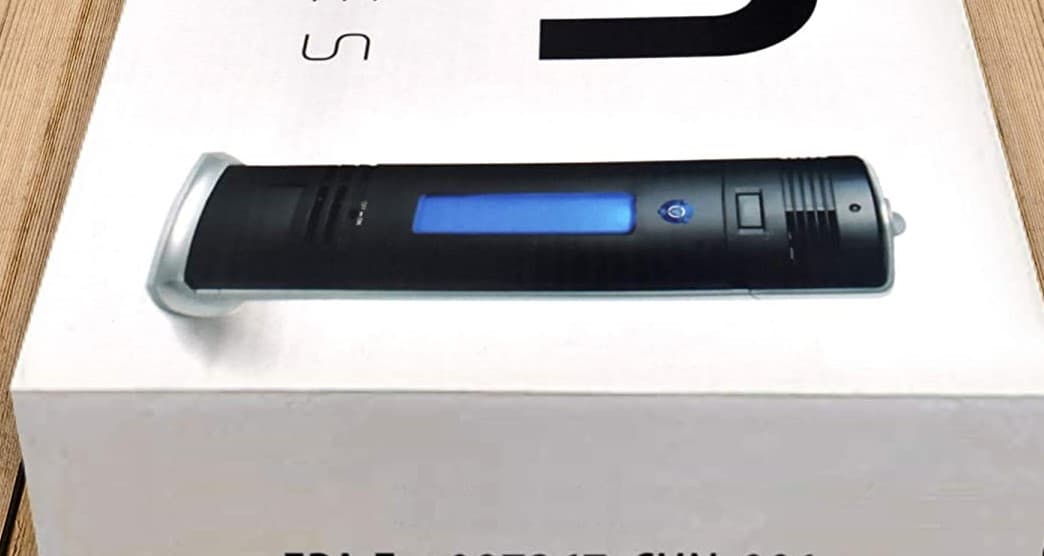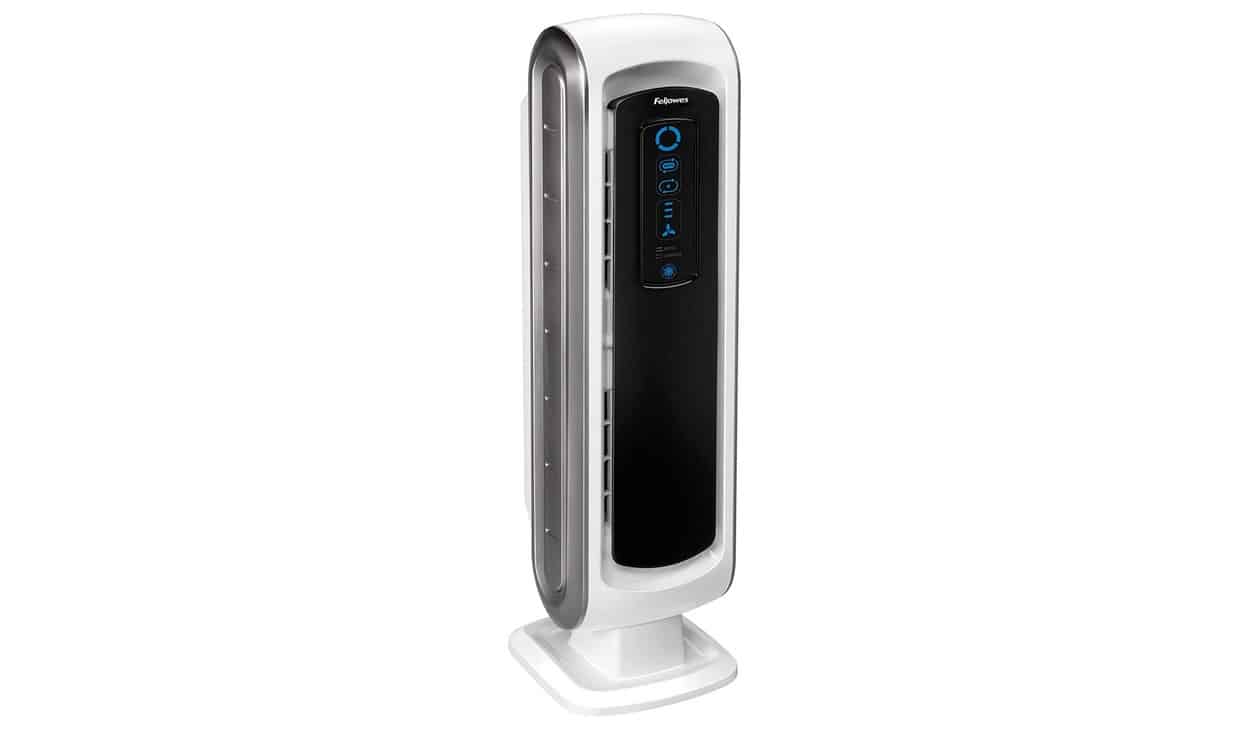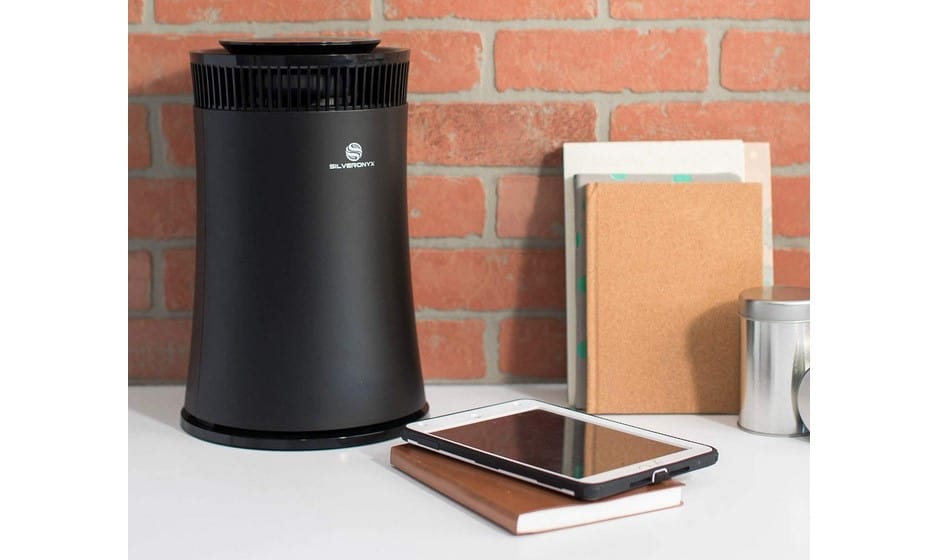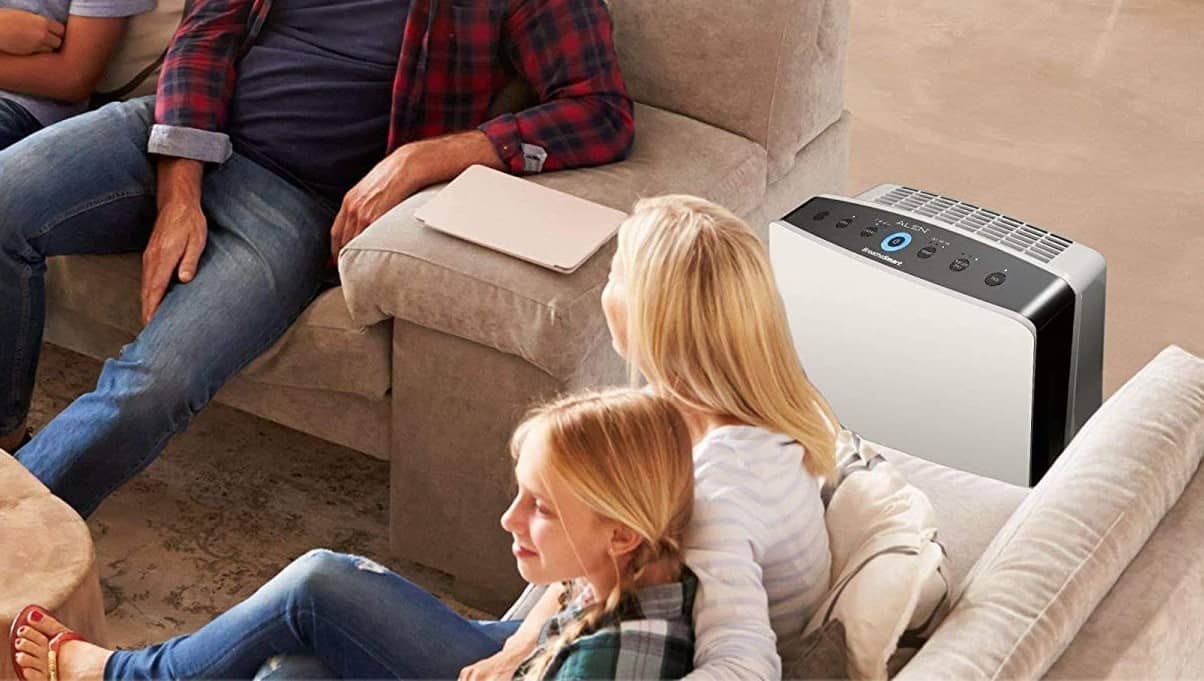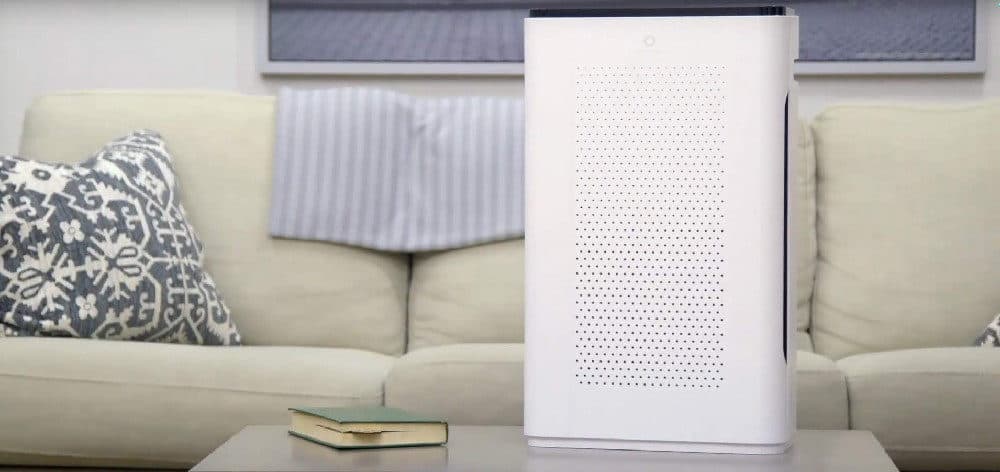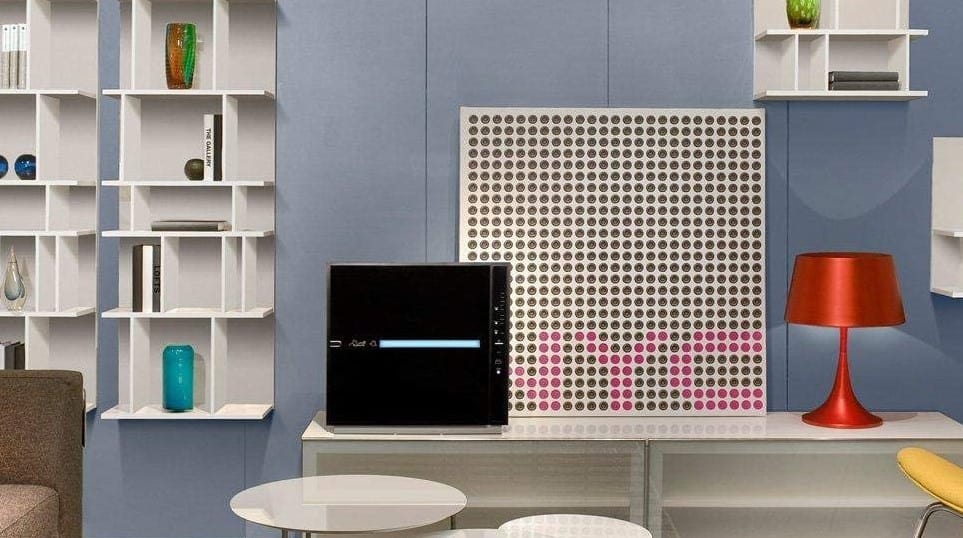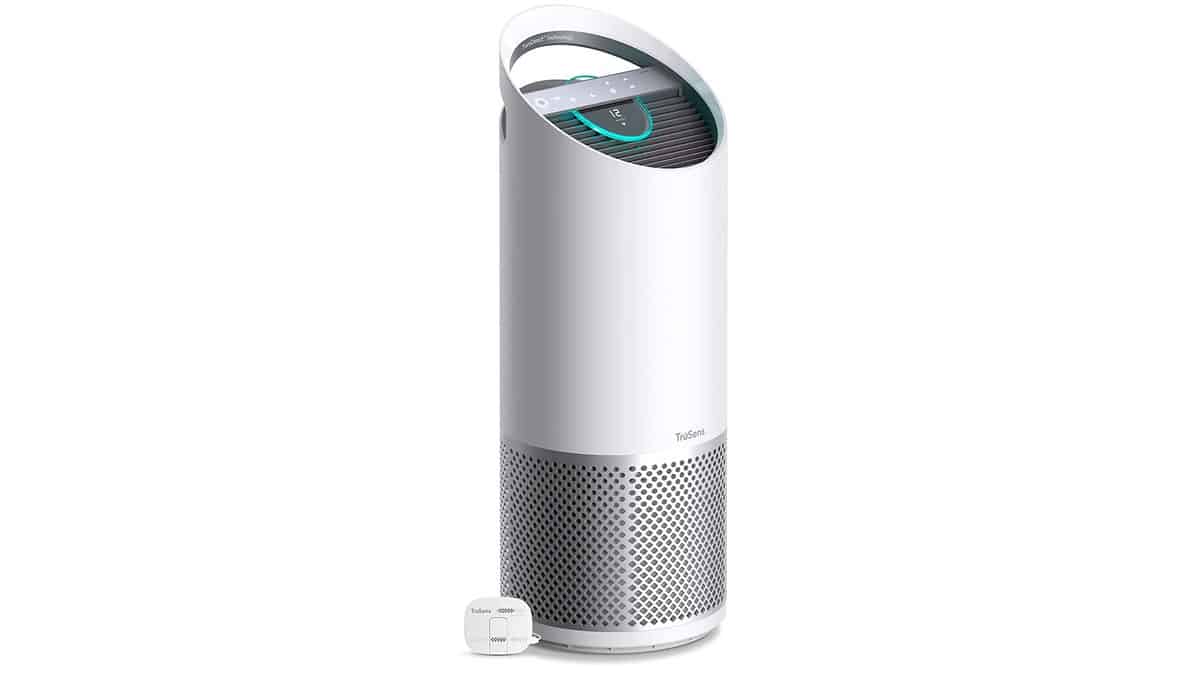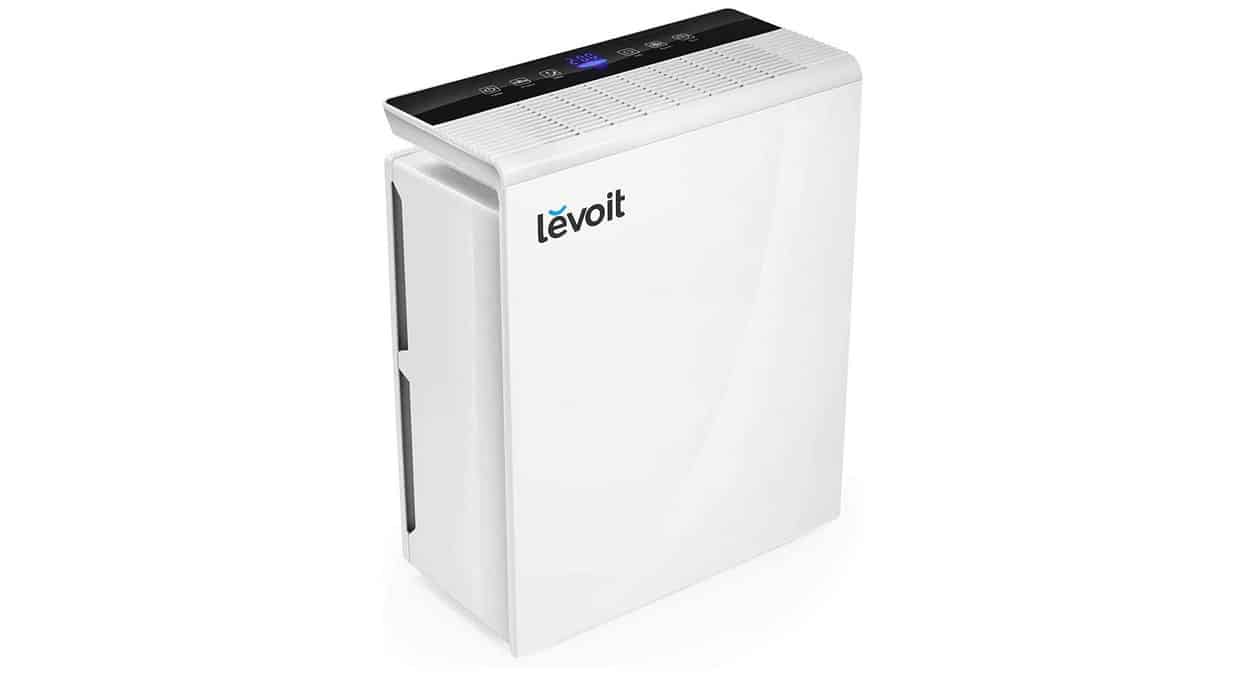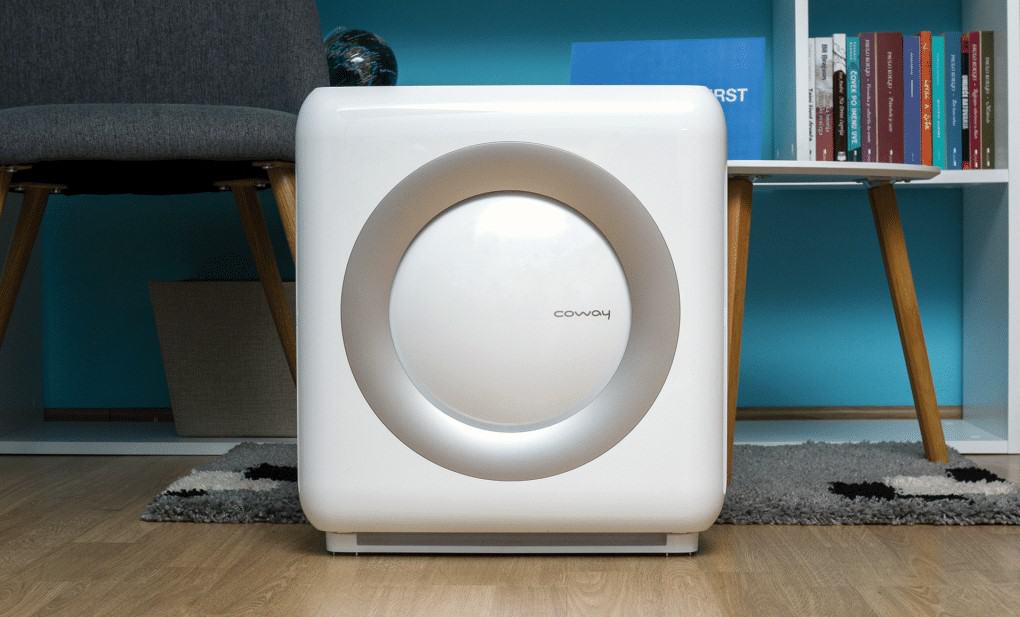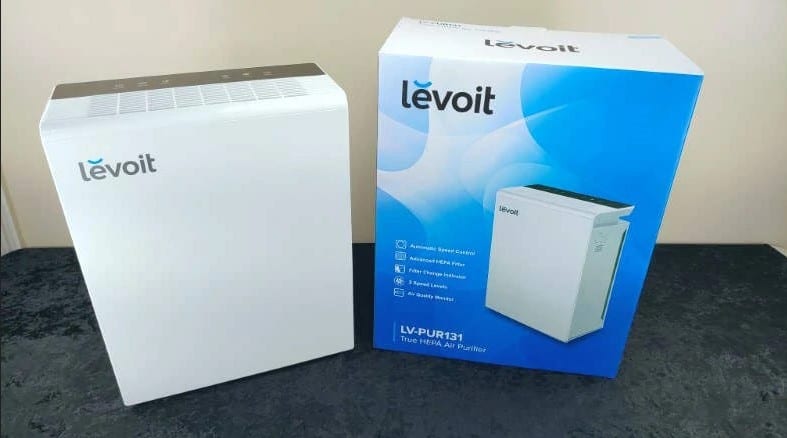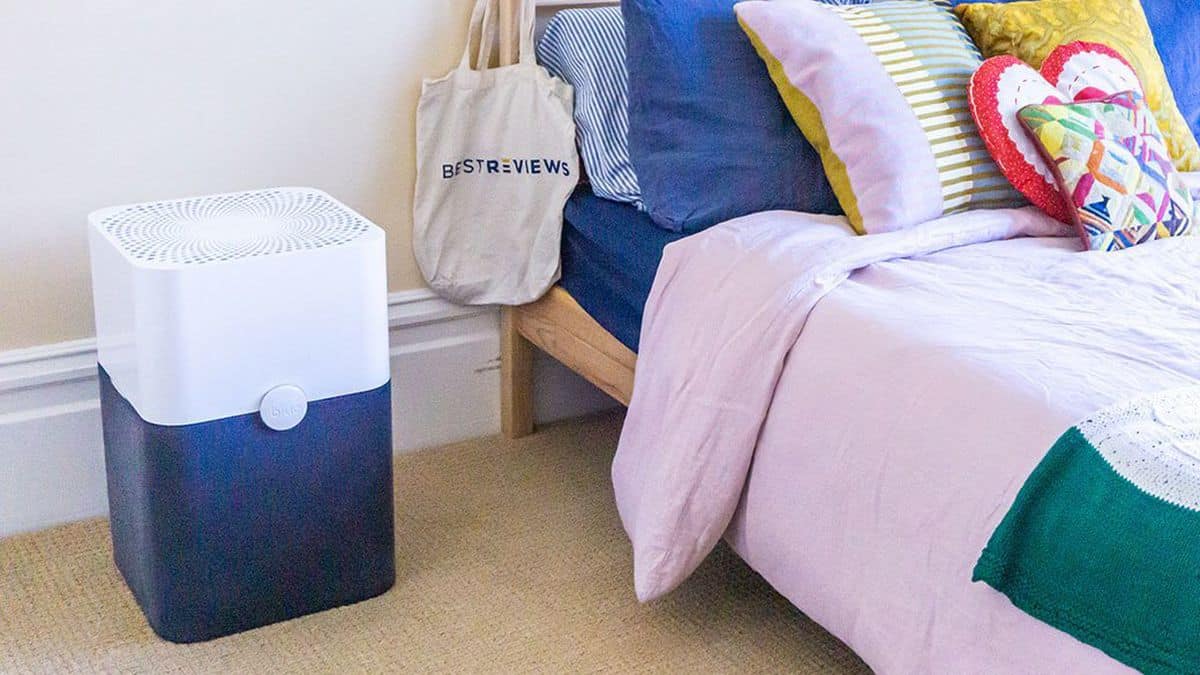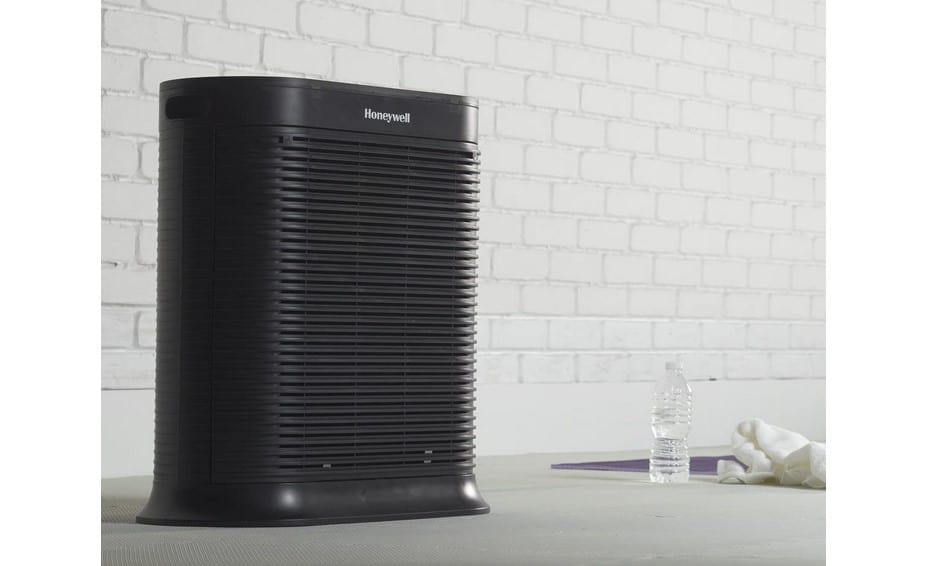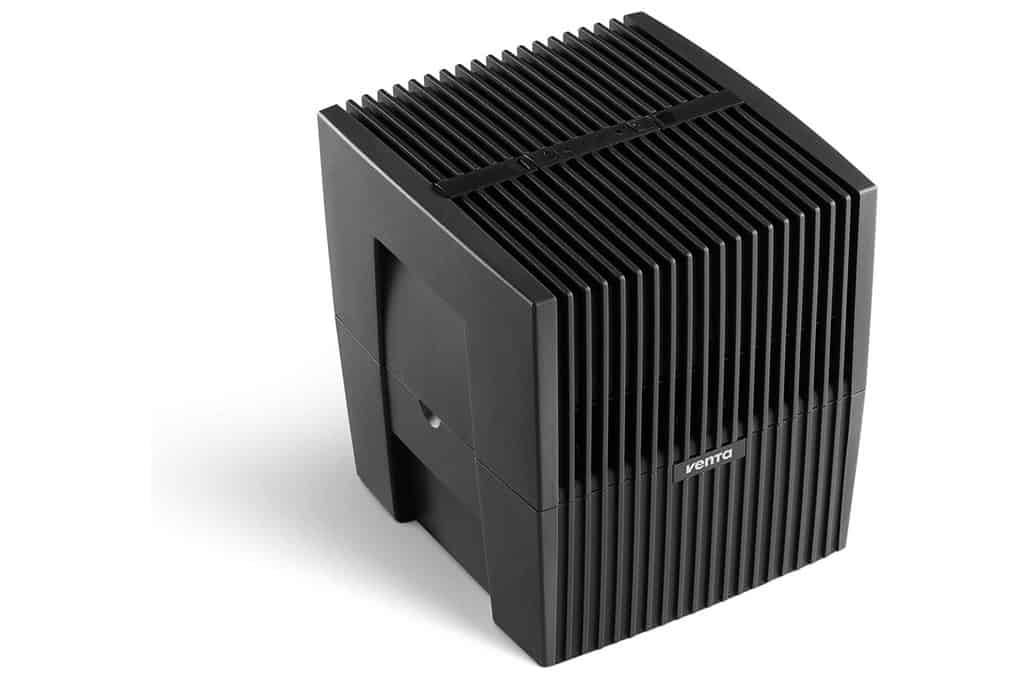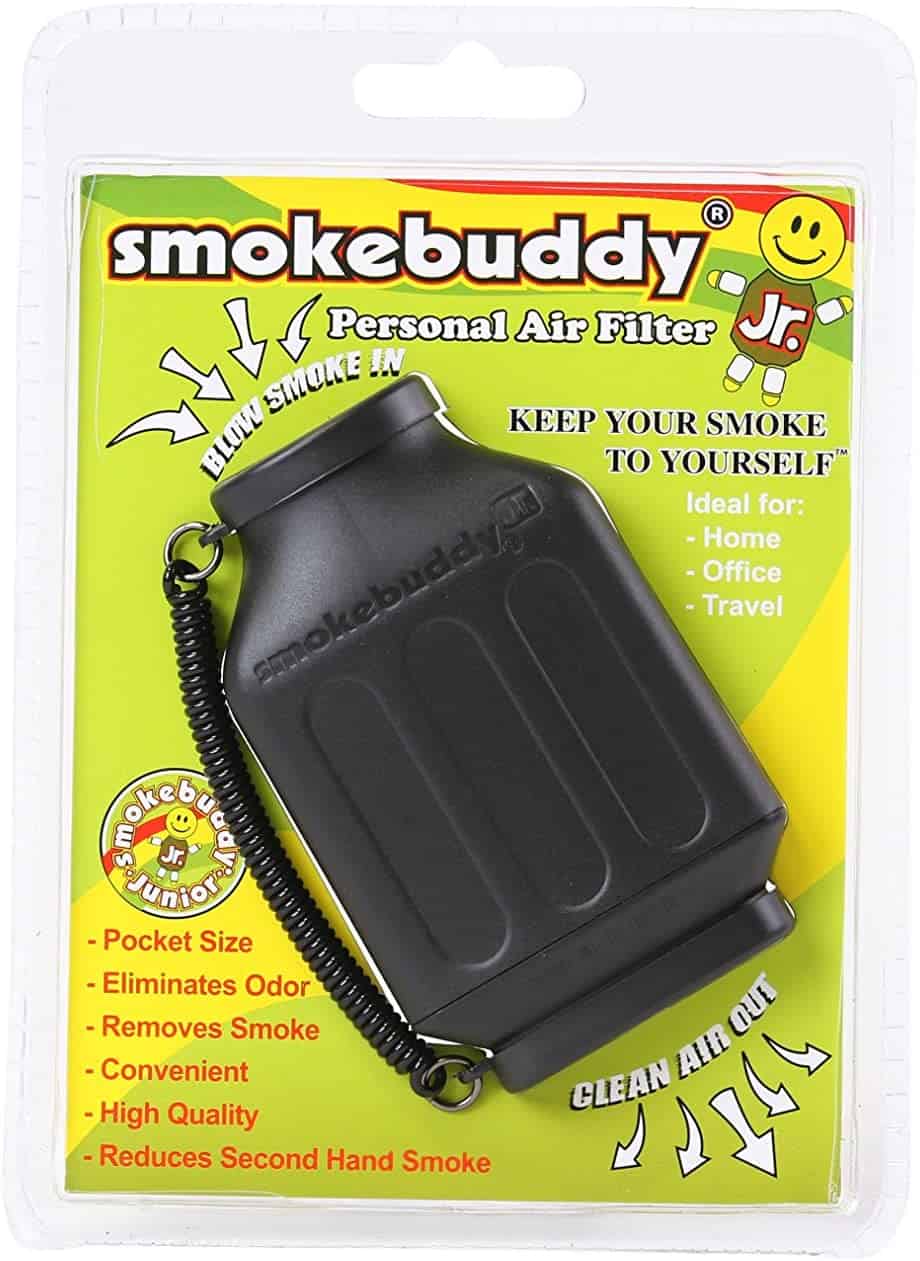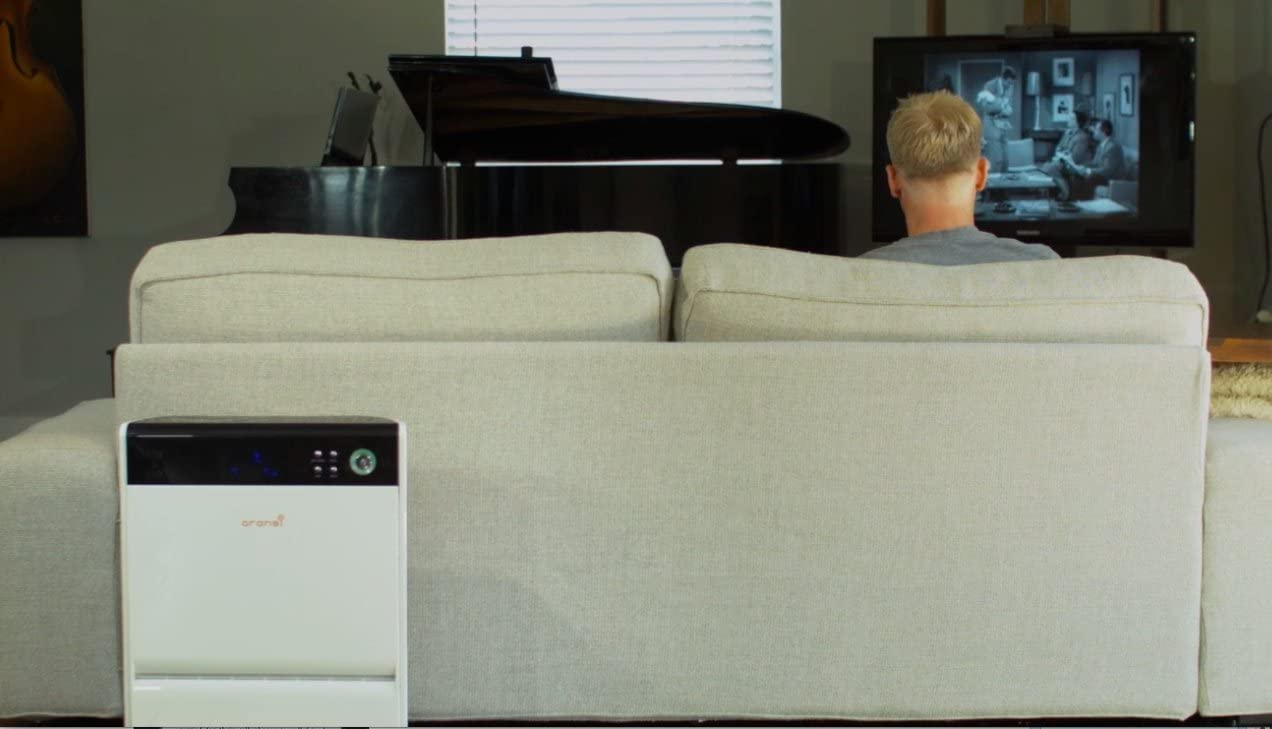If you’re looking for the best air purifier for dust removal, then there are plenty of options on the market. The first thing you’ll want to prioritize is a True HEPA filter. This filter is the only one that’s scientifically proven to remove dust from the air.
Another major factor is the CADR score. This determines how much air an air purifier can effectively clean and move based on the appliance’s capacity and the size of the room. Picking an air purifier with a low CADR score that’s not compatible with the size of your room will lead to inefficiencies. Keep reading our buying guide for the best air purifier for the dust to learn more.
Top Air Purifiers for Dust
#1 LEVOIT Core 300 Air Purifier
Award: TOP PICK
WHY WE LIKE IT: This high-end Levoit air purifier includes a 360° air intake to ensure the whole room has fresh, breathable oxygen. This product also uses VortexAir technology to remove asthma and allergy antecedents.
- 360° air intake
- UV-C light purification
- VortexAir technology
- Struggles with strong smells
There are multiple filters to choose from with this air purifier: one for toxins, one for smoke removal, one for pet allergies, and an original. This allows you to target the exact problem that you’re dealing with. The original filter it comes with is the Core 300 True HEPA filter. Unfortunately, if you have a particularly tough odor to get rid of, this machine might not be able to do the job. It’s probably not suited for multi-person bathrooms or large kitchens.
Since it uses UV-C light to clean your air, you know that it’s free of dangerous ozone emissions. It features VortexAir technology which can clean spaces up to 547 square feet in around 30 minutes. The pre-filter will help clean air through an efficient intake system. There is even a sleep mode available so that you can rest easy to the tune of 24 decibels. The sleek design is award-winning and looks great anywhere you place it.
#2 Germ Guardian AC4825E Air Purifier
Award: HONORABLE MENTION
WHY WE LIKE IT: With its almost silent operation, this product is perfect for the bedroom and could be a fine air purifier for a dorm room, too. It has four uses in one sleek package and can effectively trap airborne allergens. We love how many pollutants it removes from the environment.
- Pre-filter system
- Four uses in one
- Nearly silent operation
- Filters are not cost-effective
This air purifier comes in two colors so you can better suit your style. It provides a 4-in-1 purification system that reduces up to 99.7% of airborne pollutants using UV-C light. It’ll remove allergens such as mold, dust, pet dander, pollen, and more. Air is processed through a certified HEPA filter. The brand-specific air filters it comes with are not particularly budget-friendly, however. For budget-conscious consumers, it’s probably best to invest in off-brand options.
It also features a pre-filter system so air is purified from the very first intake. This helps separate large particles, while the internal filter takes care of everything else. An activated charcoal design helps to reduce unpleasant odors in your environment from pets, cooking, smoke, and more. You can also use it as a source of white noise at night if you put it on its lowest setting. This option is energy star certified, CARB compliant, and AHAM verified.
#3 Honeywell HPA300 Air Purifier
Award: BEST FOR HUGE AREAS
WHY WE LIKE IT: If you have a huge house, this is a great Honeywell air purifier to ensure proper filtration through the entire area. It also includes certified filtration systems to ensure that it removes all allergens and asthma antecedents.
- Includes pre-filtration system
- HEPA-certified filtration
- Provides better circulation
- May be too loud
This air purifier works great for extra-large rooms. It can handle up to 465 square feet of purification 4.8 times an hour. That makes this model perfect for larger living rooms, event halls, garages, and much more. The biggest downside is that this product can be loud. While some white noise is to be expected, it tends to be a little more than most would like. With that said, it’s a good idea to compare Levoit air purifiers vs Honeywell, to see which one is quieter.
This air purifying model is part of an “Allergen Plus” series. That makes it an ideal air purifier for asthma and those with breathing problems or allergies. It has also earned the Energy Star label and meets the strictest energy efficiency standards set by the EPA. Moreover, most people breathe better with an air purifier and a top-rated humidifier, too. The pre-filter is designed to take care of larger particles so that the inner filter can get rid of the smaller bits. Foul odors and VOCs are no match for this air purification system.
#4 Winix 5500-2 Air Purifier
Award: BEST FOR ASTHMA & ALLERGIES
WHY WE LIKE IT: This machine uses several technologies to remove 99.7% of pollutants as small as 0.3 microns. It runs at a very low 27.8 dB so you can sleep easily even while it’s running in the background.
- 99.7% removal of airborne pollutants
- Includes remote control
- Quiet option at 27.8 decibels
- Uses brand-specific filters
This is a great air purifier for allergies and dust, especially for those who struggle with allergies and asthma. A True HEPA filter removes up to 99.7% of airborne pollutants from your breathing supply. This is great for those with sensitivities to dander, pollen, pet dander, and more. The filter is capable of getting rid of airborne pollutants as small as 0.3 microns in size. However, those filters must be brand-specific and some consumers don’t like being forced to use a specific type.
PlasmaWave technology will act as a permanent filter. It safely breaks down unpleasant scents, chemical vapors, and more without releasing potentially harmful ozone into the air. Its CADR rating makes it perfect for servicing rooms up to 360 square feet in size. There are also Smart Sensors that figure out what mode is necessary to clean your air, as well as a sleep mode so you can keep it on even while you’re trying to soundly snooze.
#5 Coway Airmega AP-1512HH(W) Air Purifier
Award: BEST FOR SMALL SPACES
WHY WE LIKE IT: If you need a little machine for tiny rooms, this is a great option. Even being a smaller option, it can clear up to 361 square feet. This makes it perfect for bedrooms, bathrooms, and mudrooms.
- Clears up to 361 sq. ft.
- 4-stage filtration system
- 3 fan speeds available
- Not aesthetically pleasing
This compact option is capable of cleaning sizable areas. It can clean the air in a room up to 361 square feet. It has a much different shape than other models so you can fit it into tighter rooms without compromising on space. The odd form of this air purifier might throw some consumers off. While it is easy to put out of the way, it might lower the aesthetic of your living spaces if it’s out in the open.
The pollution sensor reads the air and figures out the air quality in real-time. It’ll let you know what the air quality is using an LED sensor that changes color. There is also a sensor that tells you when it’s time to replace your filter. Three different fan speeds allow you to have complete control over its operation. You can always keep it in auto mode to allow automatic optimization for the current level of pollution in your air for better energy efficiency.
#6 Hamilton Beach TrueAir Air Purifier
Award: BEST FOR VERSATILITY
WHY WE LIKE IT: A compact, stylish design makes this machine great for most consumers. It fits into almost any space and has the power to remove allergens like dust and dander. You’ll love the technology it packs into its small frame.
- Compact, stylish design
- Totally silent system
- High performance purification
- Might be too small
A high-performance HEPA filter will give you confidence that this air purifier can get the job done. It can process pollutants in rooms up to 160 square feet and features several modes for an optimized air cleaning experience. Even so, the small size does come at a disadvantage. This air purifier is only capable of cleaning up to 160 square feet, which means it might be too small for your purposes.
There are three different colors to choose from. Beyond this, the multiple speed settings allow even more control over your purchase. There is even a quiet setting so you can sleep soundly even while it works in the background. Versatility is the name of the game and you can use this air purifier either standing up or on its side. Beyond this, it offers minimal upkeep and is super easy to clean when necessary.
Beginners Guide to Air Purifiers for Dust
What Are Air Purifiers for Dust?
No matter how much you clean, it’s nearly impossible to prevent dust from accumulating in your home. And while it might seem like all air purifiers should be able to remove dust from the air, this sadly isn’t the case. Although dust is considered a coarse particle, not all filtration systems are designed to effectively remove it from the air.
For the best results, air purifiers that are specifically designed to remove dust should at least contain a True HEPA filter. These types of devices are certified to remove 99.97% of particles, even as small as 0.3 microns. This means that in addition to dust, you can also capture dust mites.
Sometimes True HEPA filters are paired with other filtration features like activated carbon to remove odors or PlasmaWave technology to effectively neutralize germs and volatile organic compounds (VOCs) from the air. If you’re not sure what kind of air purifier you need, our air purifier buying guide can help.
Air Purifiers for Dust vs. Air Purifiers
The primary difference between an air purifier for dust and a standard air purifier is filtration technology. To effectively remove the majority of dust from the air, you need an air purifier that relies on at least a True HEPA filter. These filters remove particles as small as 0.3 microns.
While this is great for achieving your goal of clean air, the only downside of True HEPA filter air purifiers is that they tend to be more expensive in several ways. Typically, these are pricier appliances. And then the cost for filtration replacement is much higher, sometimes as much as $200 per filter.
Still, many regular air purifiers solely rely on other forms of filtration technology such as mechanical filters and activated carbon filters which often aren’t designed to remove dust from the air. And in many cases, several brands promote “HEPA-type” air filters that are not held to the same rigorous standards as True HEPA filters. As a result, they may not remove dust as efficiently, or at all.
How Air Purifiers for Dust Work
An air purifier designed to truly remove dust from the air is going to have a True HEPA filter. We might sound like a broken record to keep repeating that fact, but you’ll be surprised by how many filtration options are available. And while they might be great at removing various particles, if dust is your priority, keep looking if it doesn’t specifically say True HEPA in the product description.
True HEPA filters feature fine mesh, which is why they can effectively trap smaller particles like dust and dust mites. But these filters also work at removing smoke, paint pigments, and other large pollutants too.
The technology for air purifiers is relatively standard, regardless of the filtration material. Air is drawn into the appliance through vents. In some cases, there’s a washable pre-filter that can help to trap larger particles and extend the life of the primary filter. Air is passed through the primary filter where smaller particles are also trapped before being released through a secondary vent reserved for clean air.
Why You Should Buy an Air Purifier for Dust
There’s no question that dust is a nuisance, no matter how much you clean. And in some cases, trying too hard to keep surfaces clean can make your dust situation worse as it forces dust into the air — only to settle back on surfaces later.
Are Air Purifiers for Dust Worth Buying?
You Struggle with Dust Allergies or Asthma: Dust, dander, dust mites, and other airborne pollutants can wreak havoc on allergies and asthma. A True HEPA filter can help to purify the air and help you breathe easier.
You Want to Improve Your Indoor Air Quality: Even if you don’t have allergies, many homes have poor air quality because pollutants can get trapped inside. A good air purifier that’s enhanced with additional filtration options like activated carbon filters can help to eliminate VOCs and odors from the air. Review our best air purifiers for VOCs and formaldehyde buying guide to learn more.
Why Air Purifiers for Dust May Not Be for You
You Don’t Want to Deal with the Expense: True HEPA filters are good, but they can be expensive. Even though they usually only need to be replaced every six to 12 months, they can cost anywhere from $80 to $200. Along with the initial upfront investment of the appliance, this can be a setback for people on tight budgets.
You Don’t Understand How Air Purifiers Work: Air purifiers only remove pollutants from the air — not surfaces. So, if you think an air purifier means you never need to dust or vacuum again, this isn’t going to be something you should add to your home.
You’re More Focused on Removing Other Pollutants: If dust isn’t your concern but pathogens are, then a HEPA filter-based air purifier might not be the right choice. Instead, you’re going to want either PECO technology or a high-quality activated carbon filter-based air purifier.
How Long Will Air Purifiers for Dust Last?
Technically speaking, air purifiers can last for a long time as long as you take care of them. But you should focus more on how frequently you’ll need to replace the filters. Keep in mind that with True HEPA filters, you’ll need to replace them once or twice a year. This usually translates to every six to 12 months.
But if you have an air purifier that also features additional functionality such as odor removal (thanks to an activated carbon filter) or neutralizes pathogens with UV light, you’ll also need to factor in replacing additional filters or in the case of UV-based air purifiers, the replacement bulbs.
How to Choose the Best Air Purifiers for Dust
Banishing dust from the air can help to keep your home not just clean, but more liveable. Along with improving air quality, depending on any additional features you prioritize, you can also pick a model that removes odors — making your home fresher too.
Air Purifiers for Dust Key Factors to Consider
1. Does the air purifier have a True HEPA filter?
Hands down, the most important factor to consider when you’re shopping for an air purifier specifically to capture dust is that it must have a True HEPA filter. Don’t be fooled by brands that use language like “HEPA-type” or “HEPA-like”. These filters are not proven to work as effectively as True HEPA filters.
2. What is the CADR score?
The Clean Air Delivery Rate (CADR) score determines how efficiently your air purifier can remove contaminants from the air depending on the total size of a room. But it’s also important to remember that CADR scores can vary depending on the type of pollutant you’re trying to remove.
So, be sure to specifically look for dust CADR scores. Keep in mind that the highest score for dust is 400 but you shouldn’t consider an air purifier with a dust CADR lower than 200.
3. How expensive is the filter?
True HEPA filters are usually some of the most expensive filters on the market. At the priciest level, they can be as much as $200 per filter. Depending on your budget, this might be a sticking point — even though they usually only need to be replaced once or twice a year. Always research the cost of replacement filters before making a selection so you can plan your budget accordingly.
4. Do you want any additional features?
True HEPA filters are incredibly effective at removing particles as small as 0.3 microns, but they don’t trap pathogens, VOCs, or odors. If those features are also important to you, you’re going to want an air purifier with more functionality. For odor control, an additional activated carbon filter is a good choice.
Technically speaking, activated carbon filters are also ideal for removing VOCs, but you must have several pounds of activated carbon present to do so effectively. And along the same lines, if you pick a True HEPA air purifier with UV light — which also works at neutralizing pathogens — you’ll want to ensure that the light stays on for several minutes to work effectively.
5. Does your air purifier have an air quality sensor?
An air quality sensor isn’t a requirement, but it can help your air purifier run more efficiently. The sensor automatically detects when your air quality has dipped and can adjust the settings to clean the air.
6. Are the controls easy to use?
At a minimum, you want an air purifier with a control panel that’s easy to use and doesn’t require a technical degree to operate. But you might also want to see if your air purifier comes with a remote or can be controlled through an app. These “nice to have” features can make operating your air purifier more convenient. And, you’ll want to make sure your air purifier is working correctly, so it’s a good idea to keep it well maintained.

![Best Air Purifiers for Dust in [year] 1 best air purifier for dust](https://www.gadgetreview.dev/wp-content/uploads/best-air-purifier-for-dust-image.jpg)


![Best Air Purifiers for Dust in [year] 2 LEVOIT Air Purifier for Home Allergies Pet Hair in...](https://m.media-amazon.com/images/I/419EDCYNm+L._SL160_.jpg)
![Best Air Purifiers for Dust in [year] 4 GermGuardian HEPA Air Purifier for Home, Large Rooms -...](https://m.media-amazon.com/images/I/316AtkHoSdL._SL160_.jpg)
![Best Air Purifiers for Dust in [year] 6 Honeywell HPA300 HEPA Air Purifier for Extra Large...](https://m.media-amazon.com/images/I/51CYjtVYFLL._SL160_.jpg)
![Best Air Purifiers for Dust in [year] 12 Our #4 Pick is the WINIX 5500-2 AIR PURIFIER](https://m.media-amazon.com/images/I/31uuleyEDfL._SL160_.jpg)
![Best Air Purifiers for Dust in [year] 13 Our #5 Pick is the COWAY AIRMEGA AP-1512HH(W) AIR PURIFIER](https://m.media-amazon.com/images/I/31u27lupLuL._SL160_.jpg)
![Best Air Purifiers for Dust in [year] 15 Our #6 Pick is the HAMILTON BEACH TRUEAIR AIR PURIFIER](https://m.media-amazon.com/images/I/41YQR0xr-DL._SL160_.jpg)


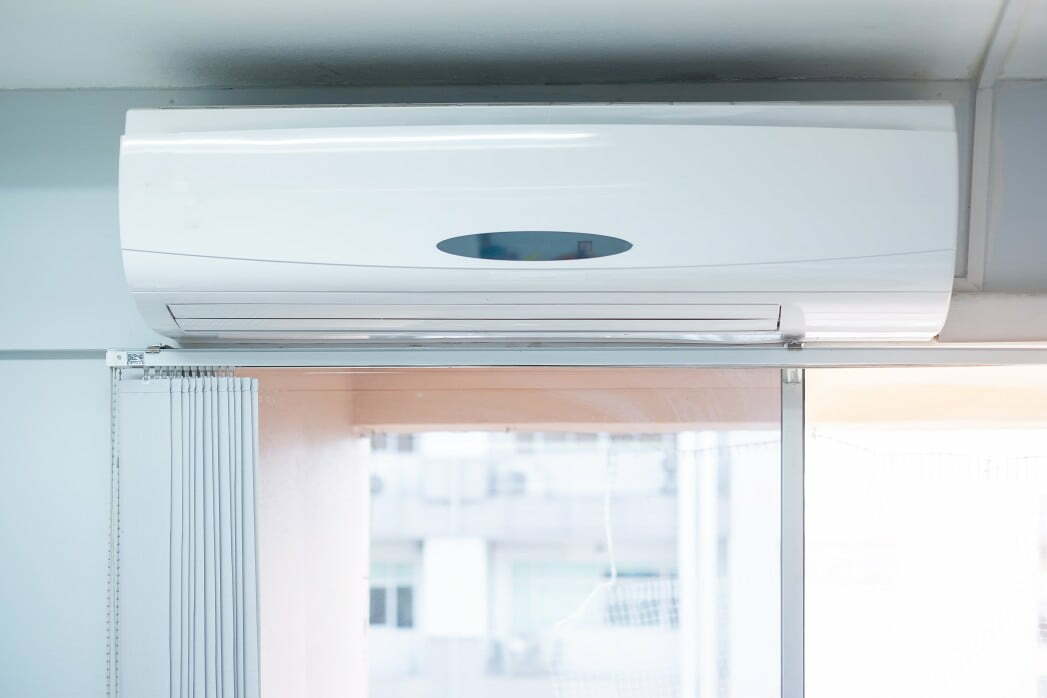
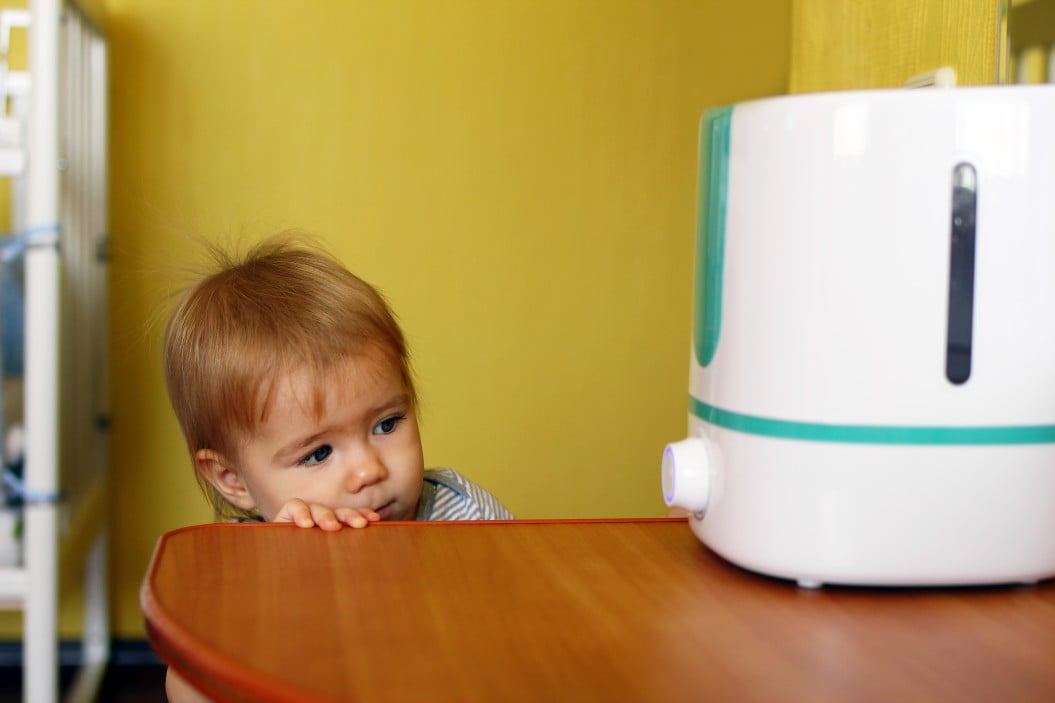
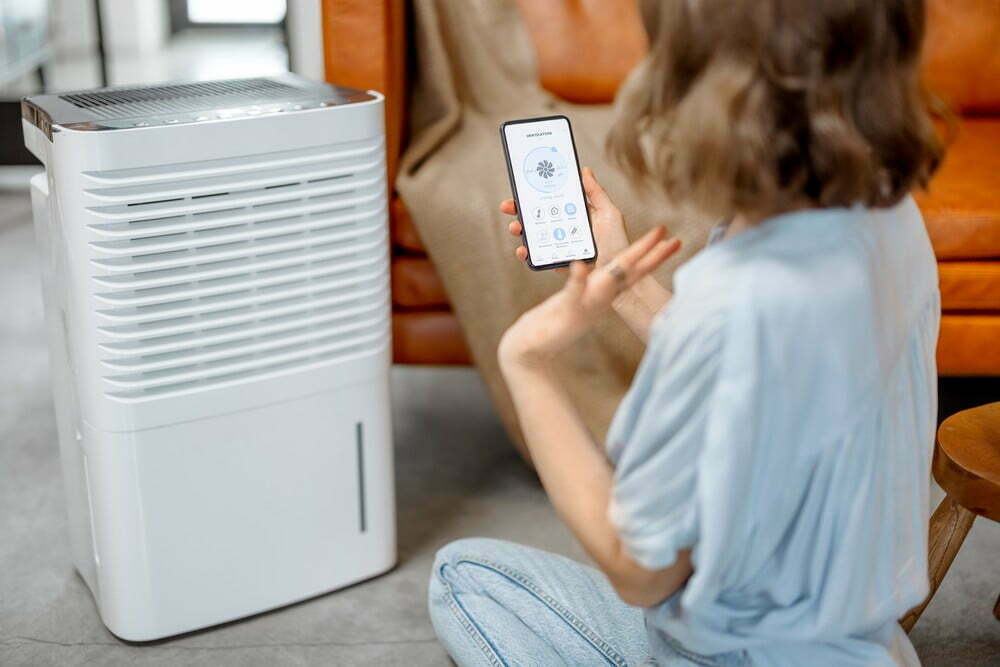
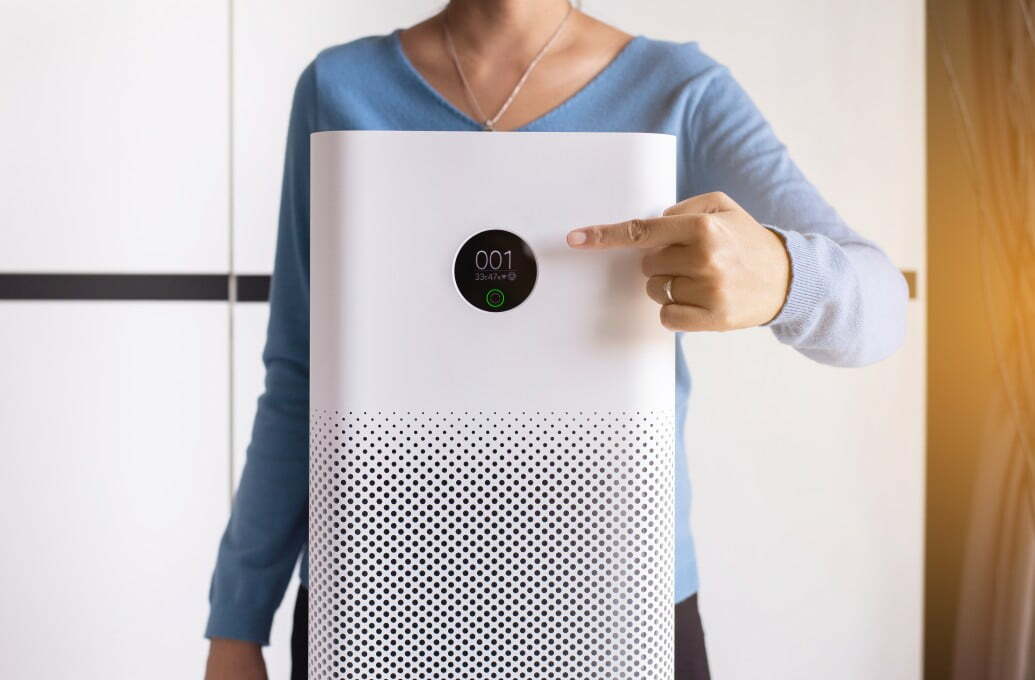
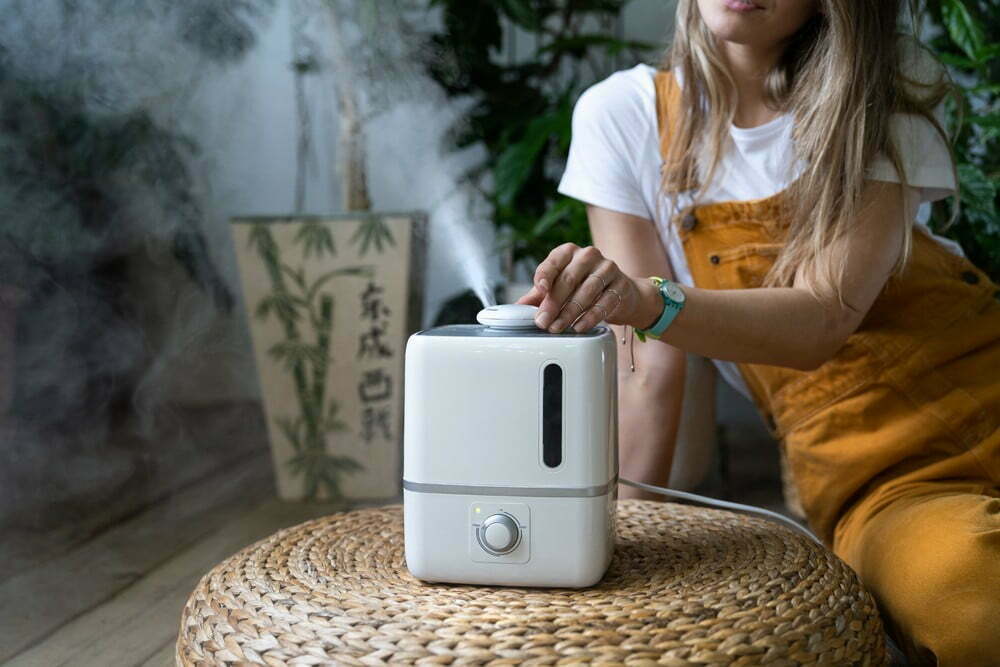
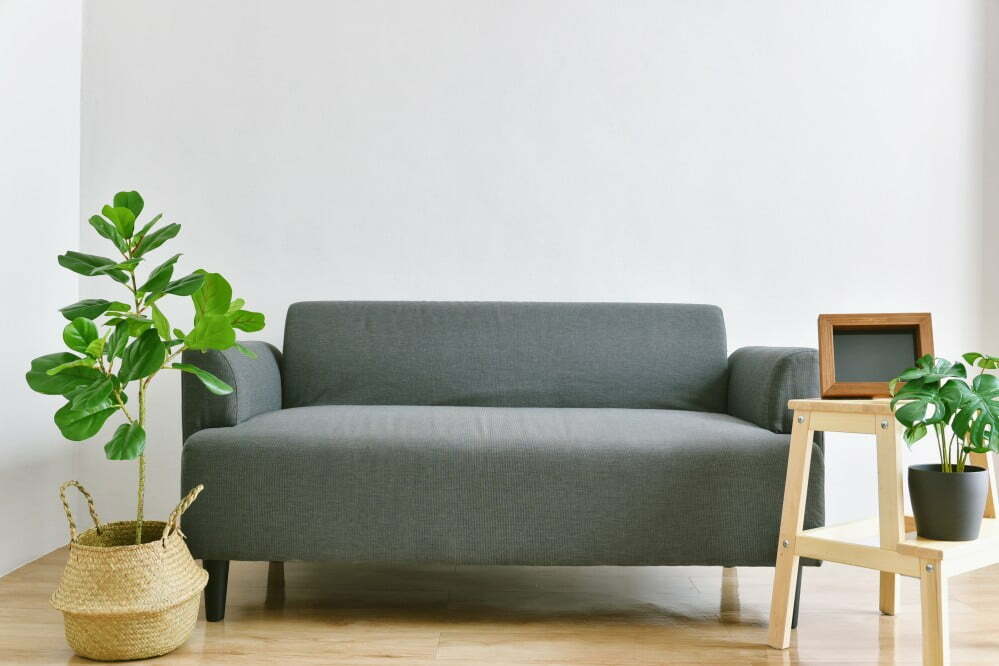

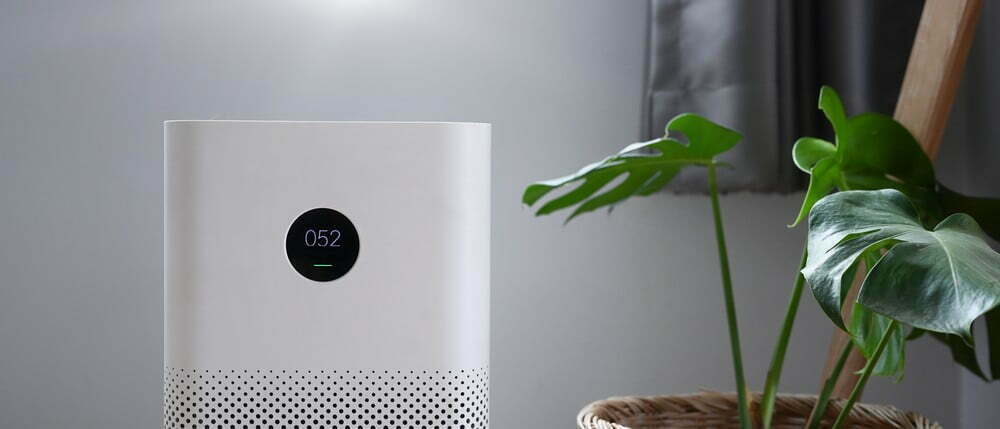
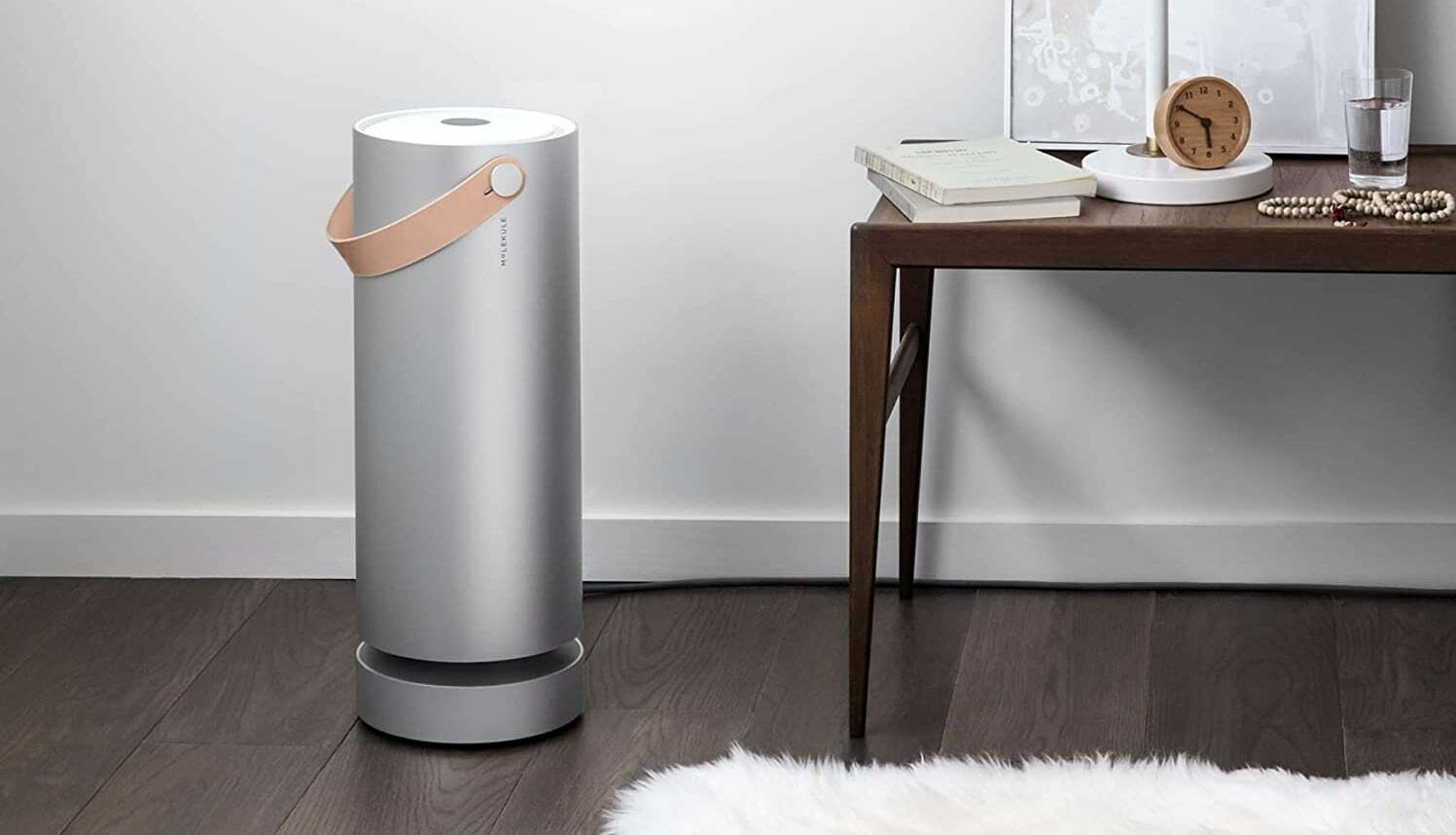
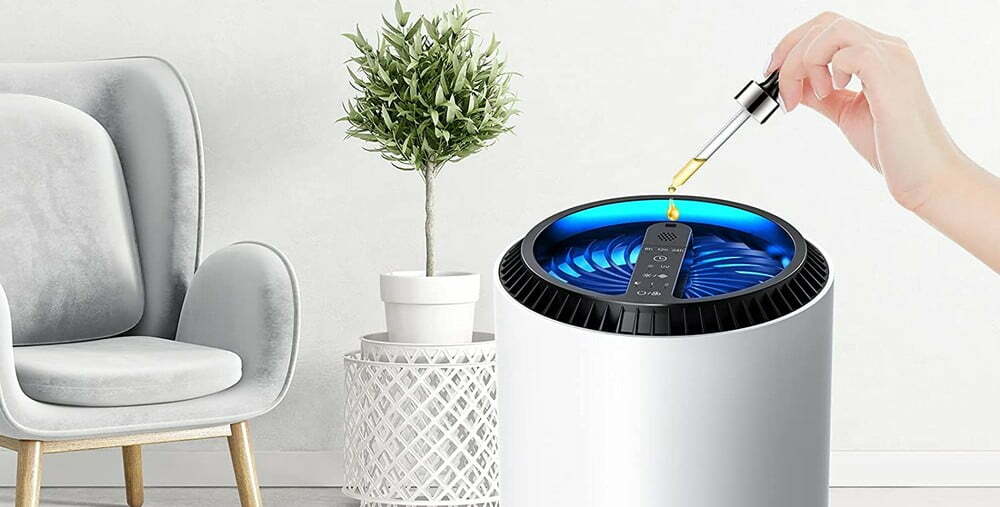
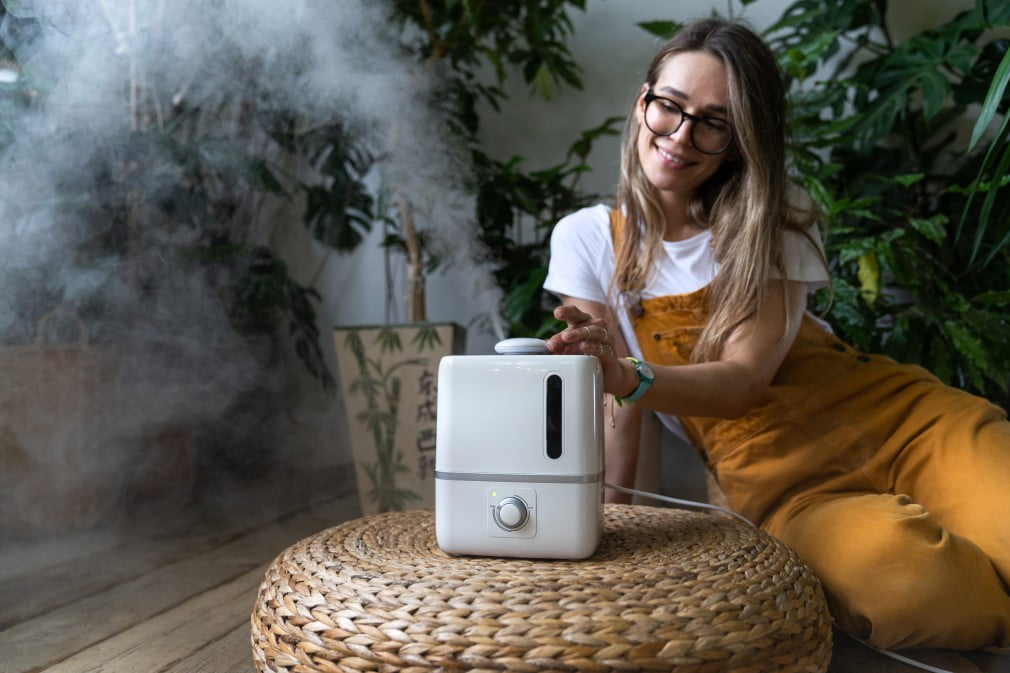
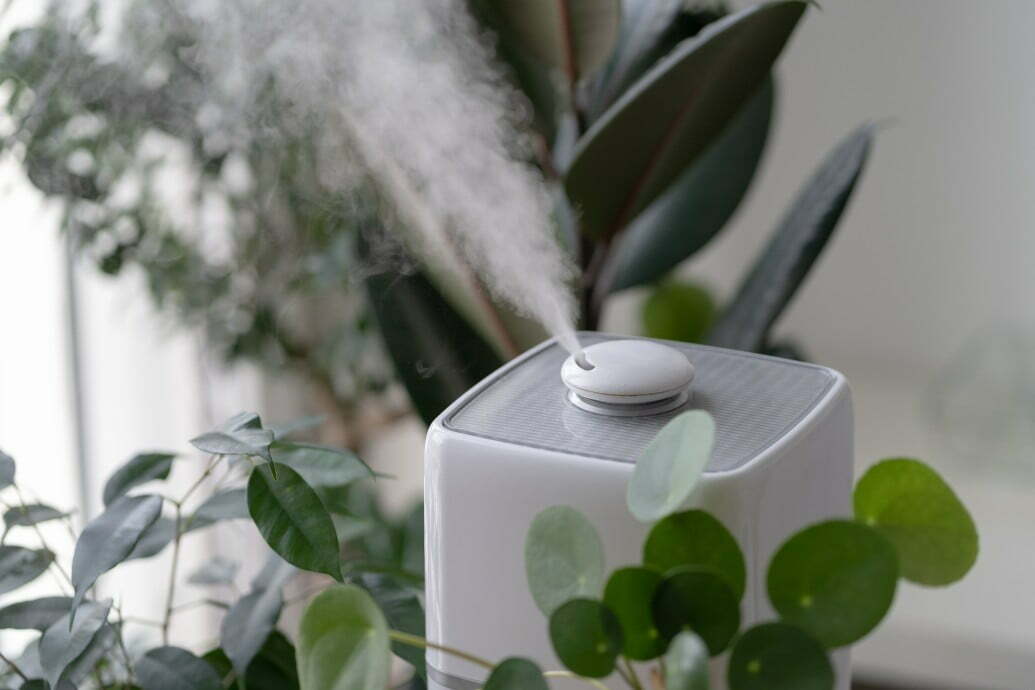
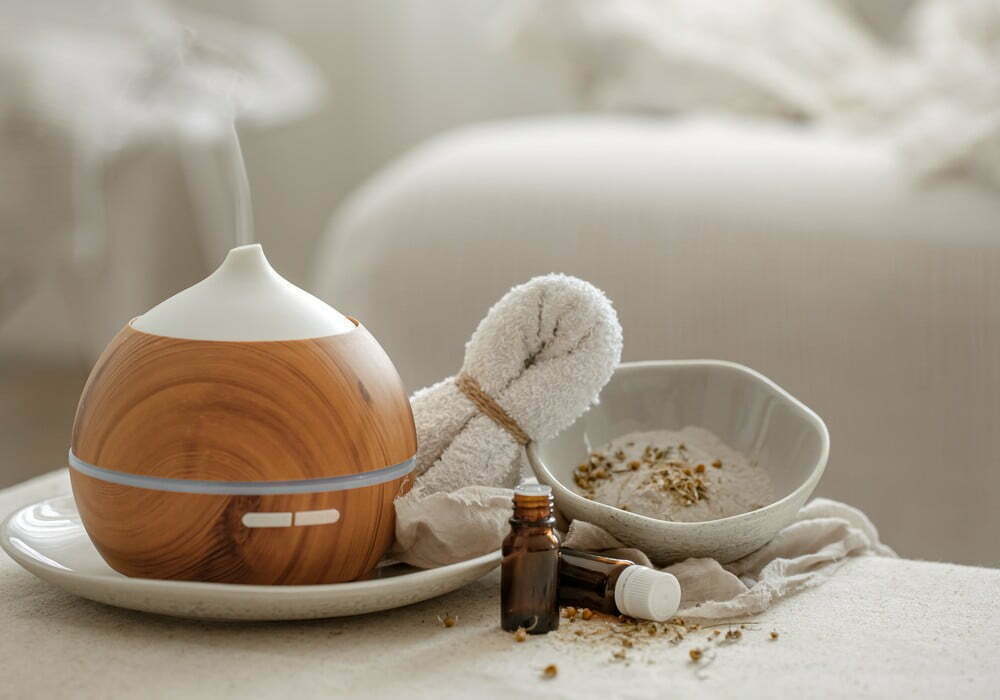
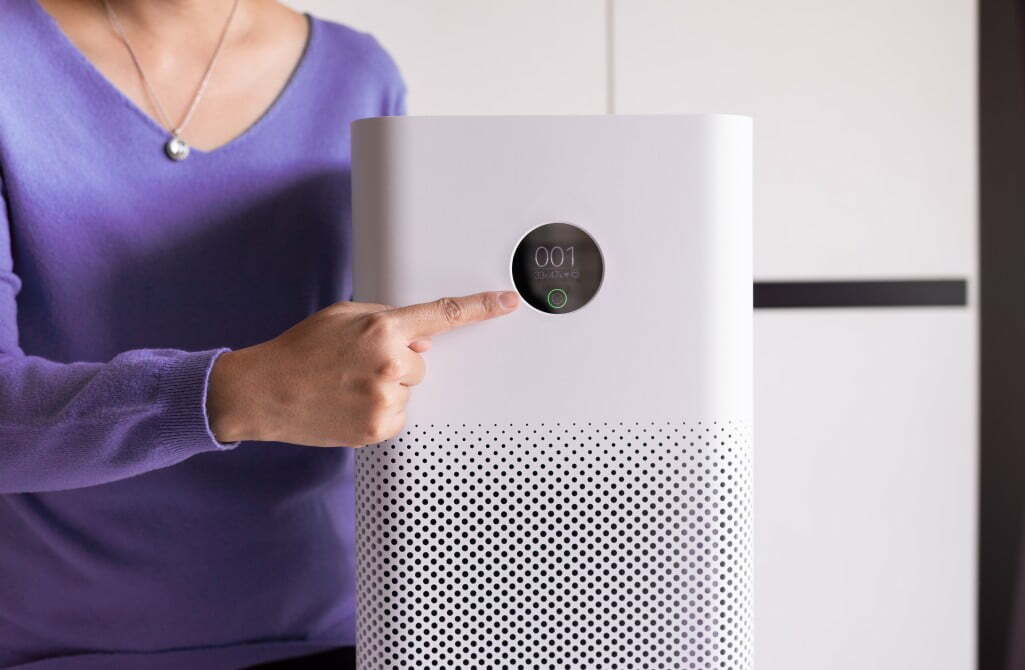
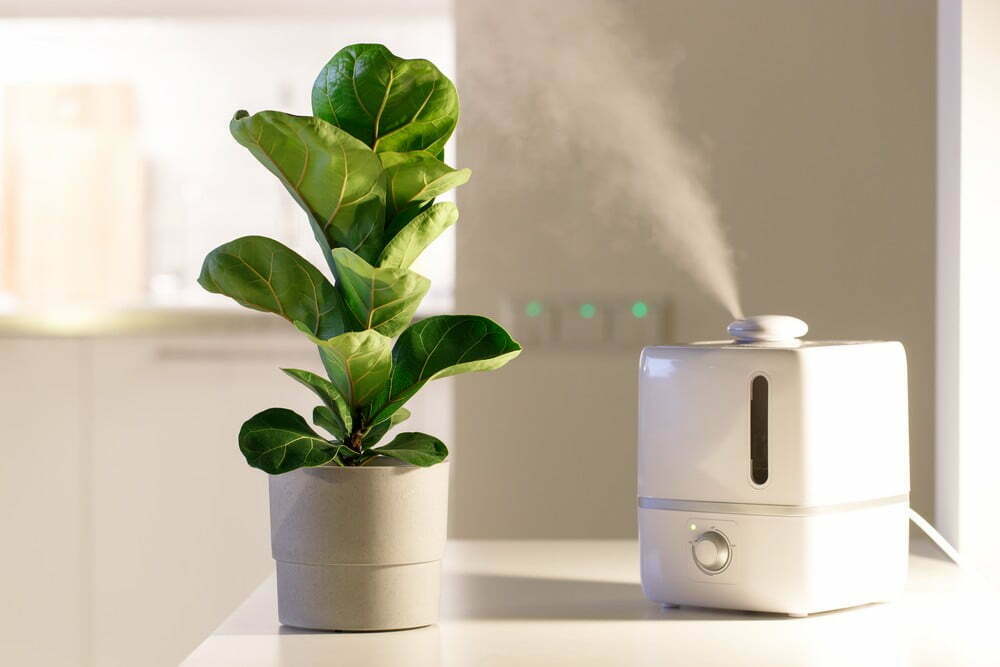
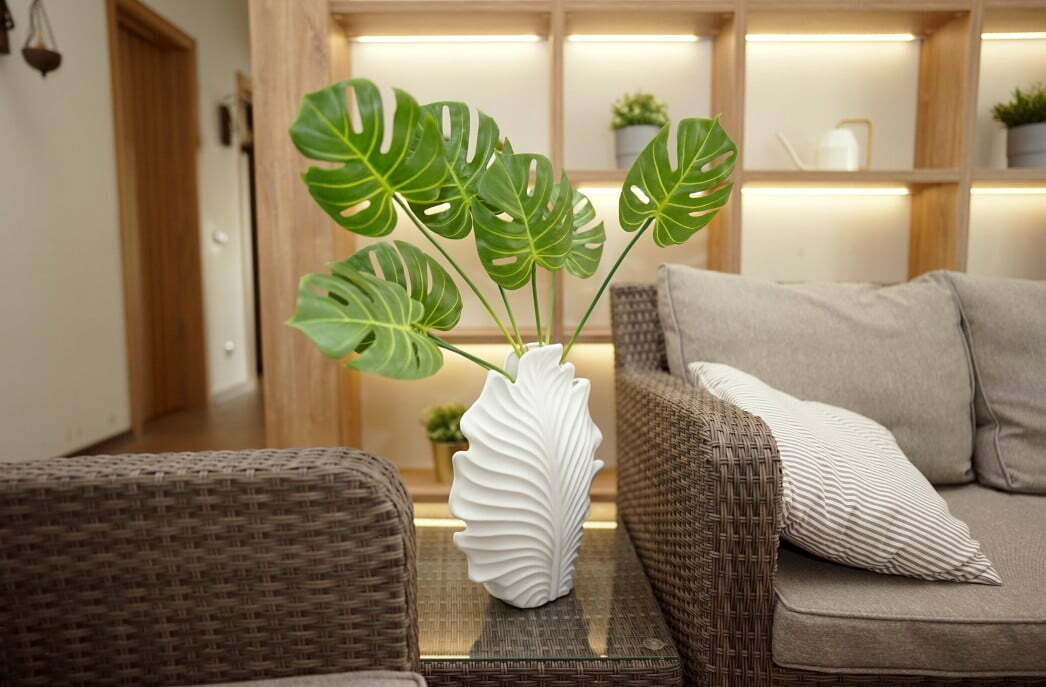
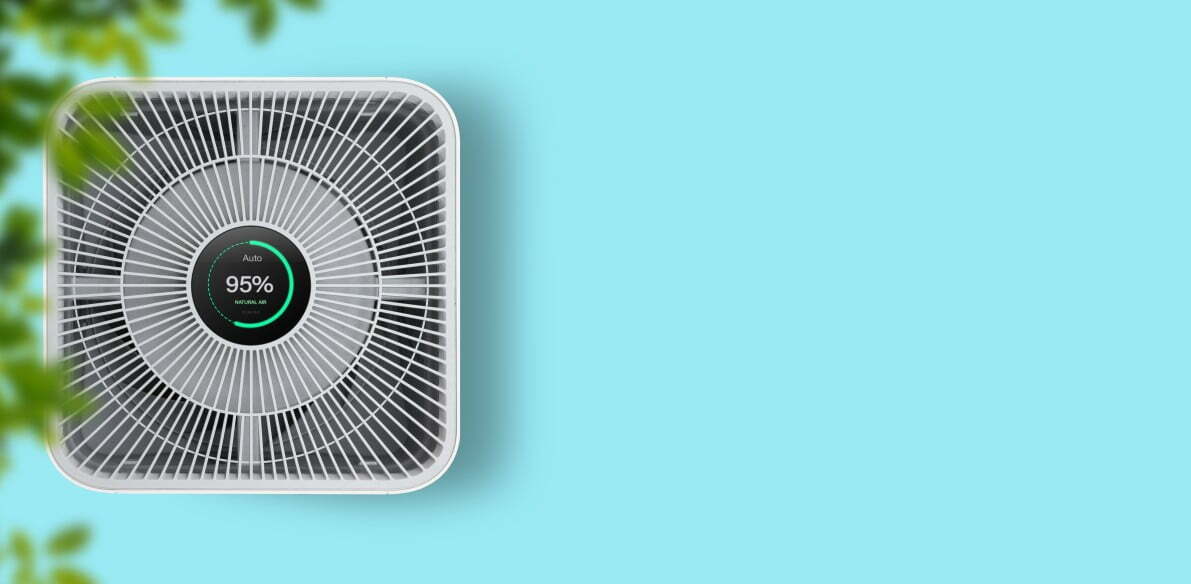
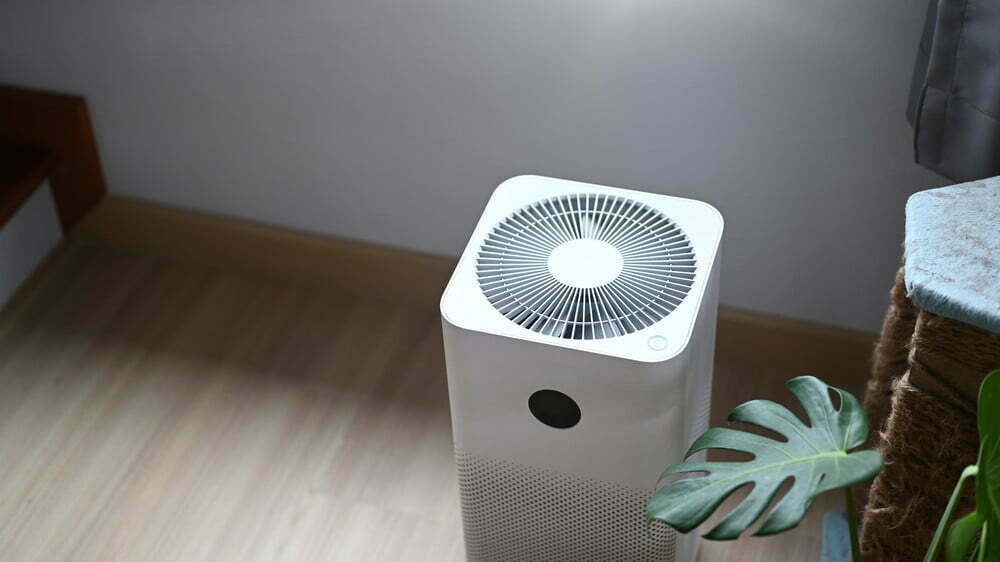
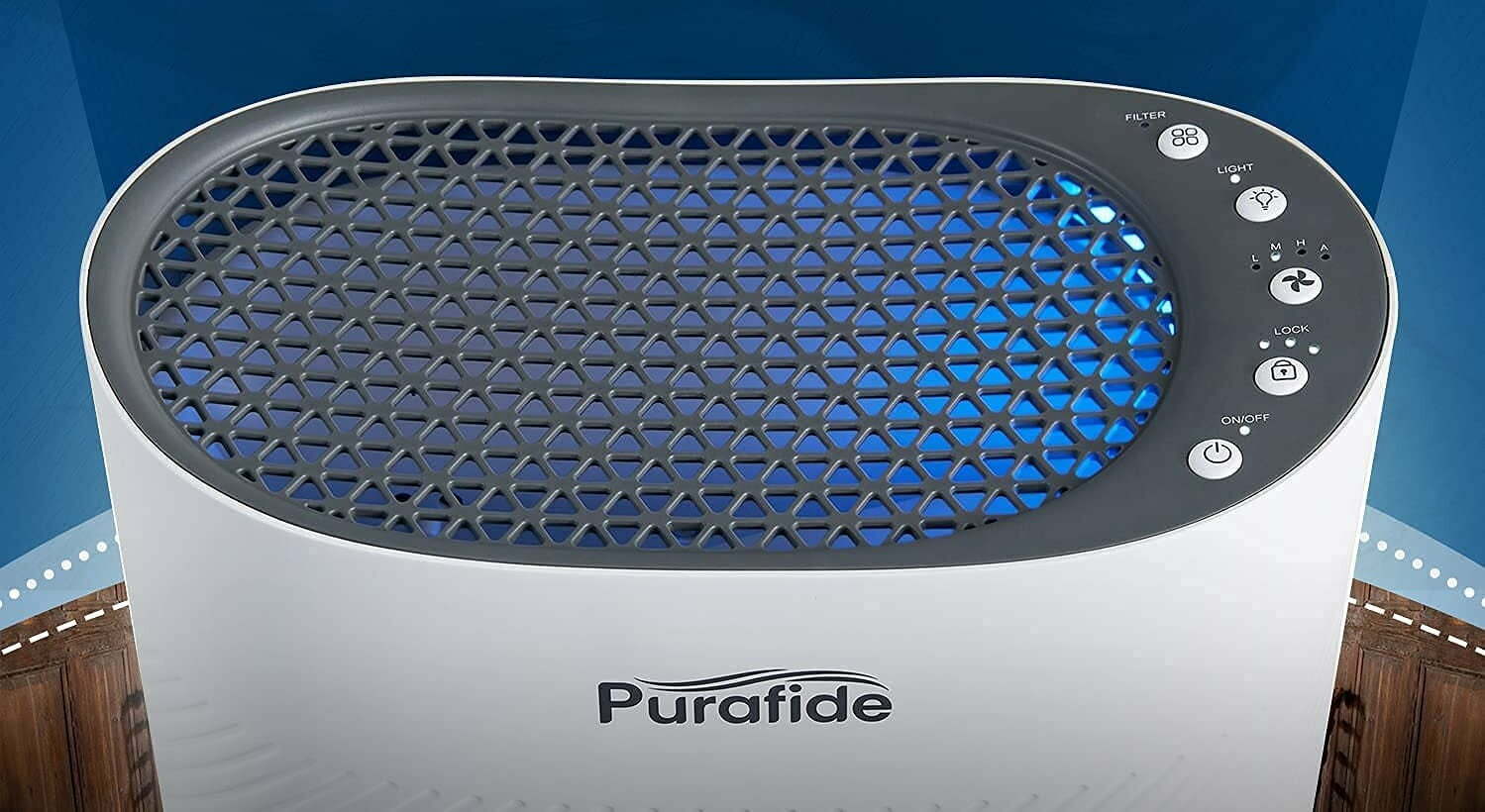
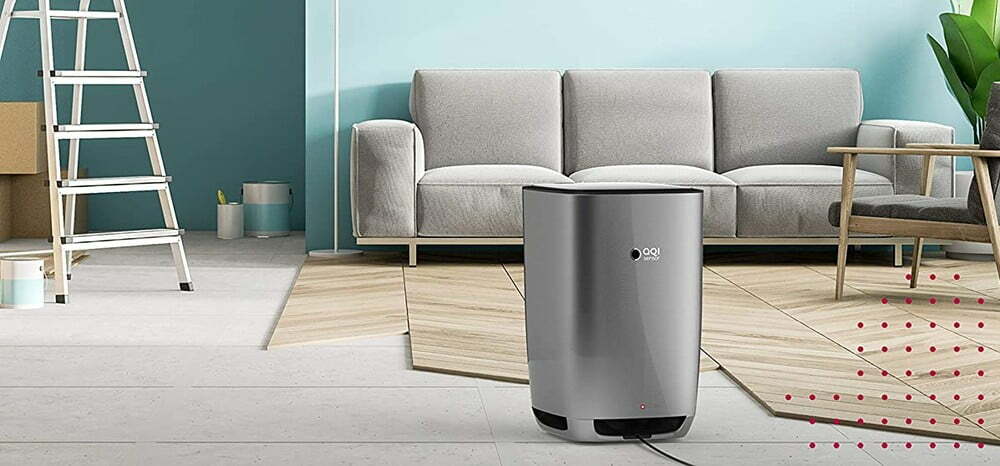
![Best Air Purifiers for VOCs and Formaldehyde in [year] 36 Best Air Purifiers for VOCs and Formaldehyde in 2026](https://www.gadgetreview.dev/wp-content/uploads/best-air-purifier-for-vocs-and-formaldehyde-image.jpg)
![Best Air Purifier in [year] ([month] Reviews) 37 Best Air Purifier in 2026 (January Reviews)](https://www.gadgetreview.dev/wp-content/uploads/Honeywell-True-HEPA-Allergen-Remover-HPA300-e1475603569442.jpg)
![Best Honeywell Air Purifiers in [year] 39 Best Honeywell Air Purifiers in 2026](https://www.gadgetreview.dev/wp-content/uploads/best-honeywell-air-purifier-image.jpg)
![Best Germicidal Air Purifiers in [year] 40 Best Germicidal Air Purifiers in 2026](https://www.gadgetreview.dev/wp-content/uploads/best-germicidal-air-purifier-image.jpg)
![Best Filterless Air Purifiers in [year] 41 Best Filterless Air Purifiers in 2026](https://www.gadgetreview.dev/wp-content/uploads/best-filterless-air-purifier-image.jpg)
![Best Levoit Air Purifiers in [year] 42 Best Levoit Air Purifiers in 2026](https://www.gadgetreview.dev/wp-content/uploads/best-levoit-air-purifier-image.jpg)
![Best Air Purifiers for Smoking Weed in [year] 43 Best Air Purifiers for Smoking Weed in 2026](https://www.gadgetreview.dev/wp-content/uploads/best-air-purifier-for-smoking-weed-image.jpg)
![Best Quiet Air Purifiers in [year] 44 Best Quiet Air Purifiers in 2026](https://www.gadgetreview.dev/wp-content/uploads/best-quiet-air-purifier-image.jpg)
![Best Desktop Air Purifiers in [year] 45 Best Desktop Air Purifiers in 2026](https://www.gadgetreview.dev/wp-content/uploads/best-desktop-air-purifier.jpg)
![Best Dyson Air Purifiers in [year] 46 Best Dyson Air Purifiers in 2026](https://www.gadgetreview.dev/wp-content/uploads/best-dyson-air-purifier.jpg)
![Best Air Purifiers for Dorm Room in [year] 47 Best Air Purifiers for Dorm Room in 2026](https://www.gadgetreview.dev/wp-content/uploads/air-purifier-for-dorm-room-1.jpg)
![Best Air Purifiers for Office in [year] 48 Best Air Purifiers for Office in 2026](https://www.gadgetreview.dev/wp-content/uploads/best-air-purifier-for-office.jpg)
![Best Air Purifiers for Basement in [year] 49 Best Air Purifiers for Basement in 2026](https://www.gadgetreview.dev/wp-content/uploads/best-air-purifier-for-basement.jpg)
![Best Air Purifiers For Odor in [year] 50 Best Air Purifiers For Odor in 2026](https://www.gadgetreview.dev/wp-content/uploads/best-air-purifier-odor.jpg)
![10 Best Personal Air Purifiers in [year] 51 10 Best Personal Air Purifiers in 2026](https://www.gadgetreview.dev/wp-content/uploads/best-personal-air-purifiers.jpg)
![10 Best Plug In Air Purifiers in [year] 52 10 Best Plug In Air Purifiers in 2026](https://www.gadgetreview.dev/wp-content/uploads/best-plug-in-air-purifier-image.jpg)
![10 Best Whole House Air Purifiers in [year] 53 10 Best Whole House Air Purifiers in 2026](https://www.gadgetreview.dev/wp-content/uploads/best-whole-house-air-purifier-image.jpg)
![10 Best Large Room Air Purifiers in [year] 54 10 Best Large Room Air Purifiers in 2026](https://www.gadgetreview.dev/wp-content/uploads/Coway-Airmega-200M-Large-Room-Air-Purifier-900x900-1.png)
![10 Best UV Air Purifiers in [year] 55 10 Best UV Air Purifiers in 2026](https://www.gadgetreview.dev/wp-content/uploads/best-uv-air-purifier.jpg)
